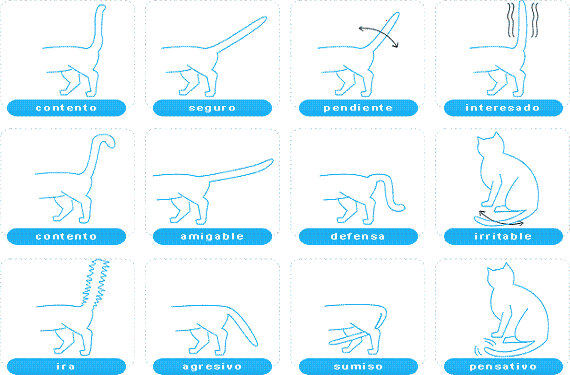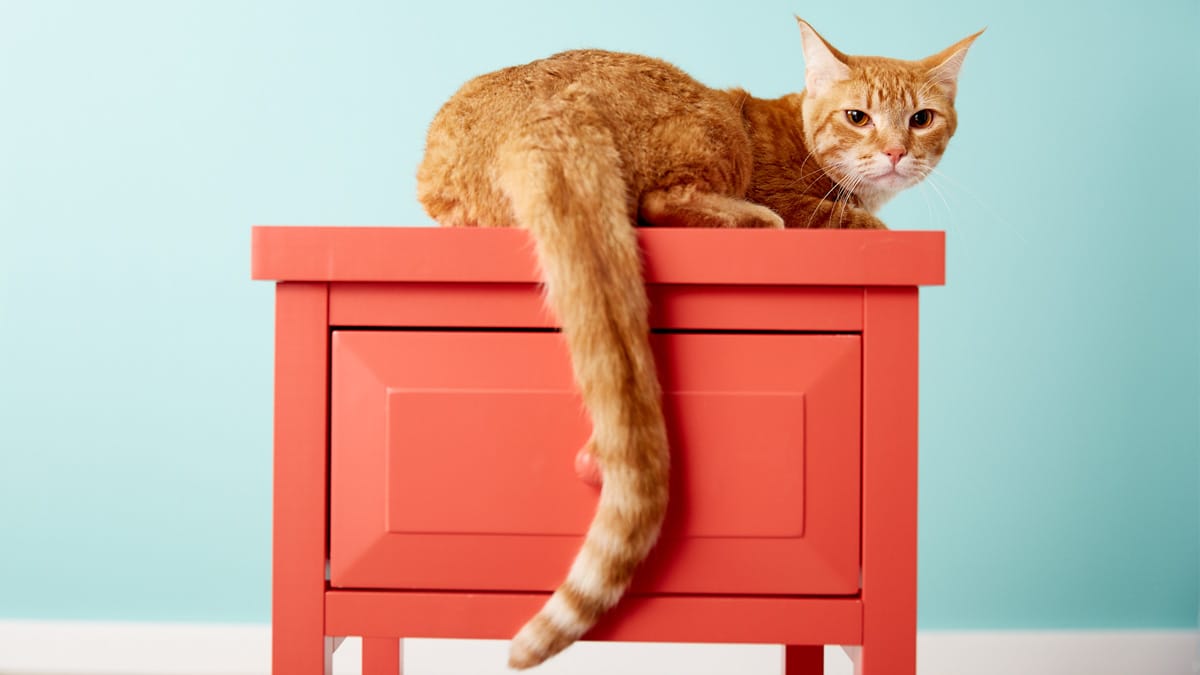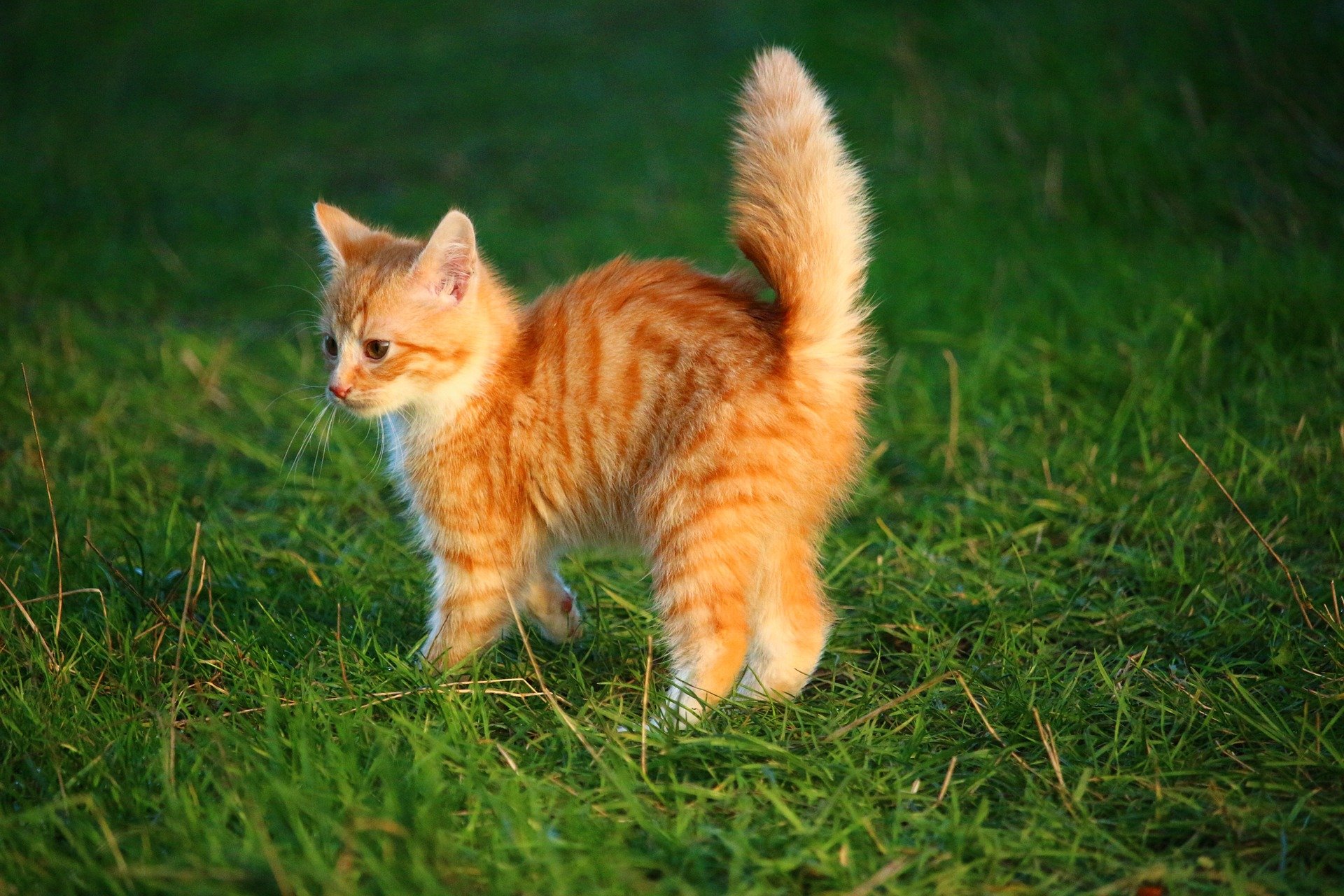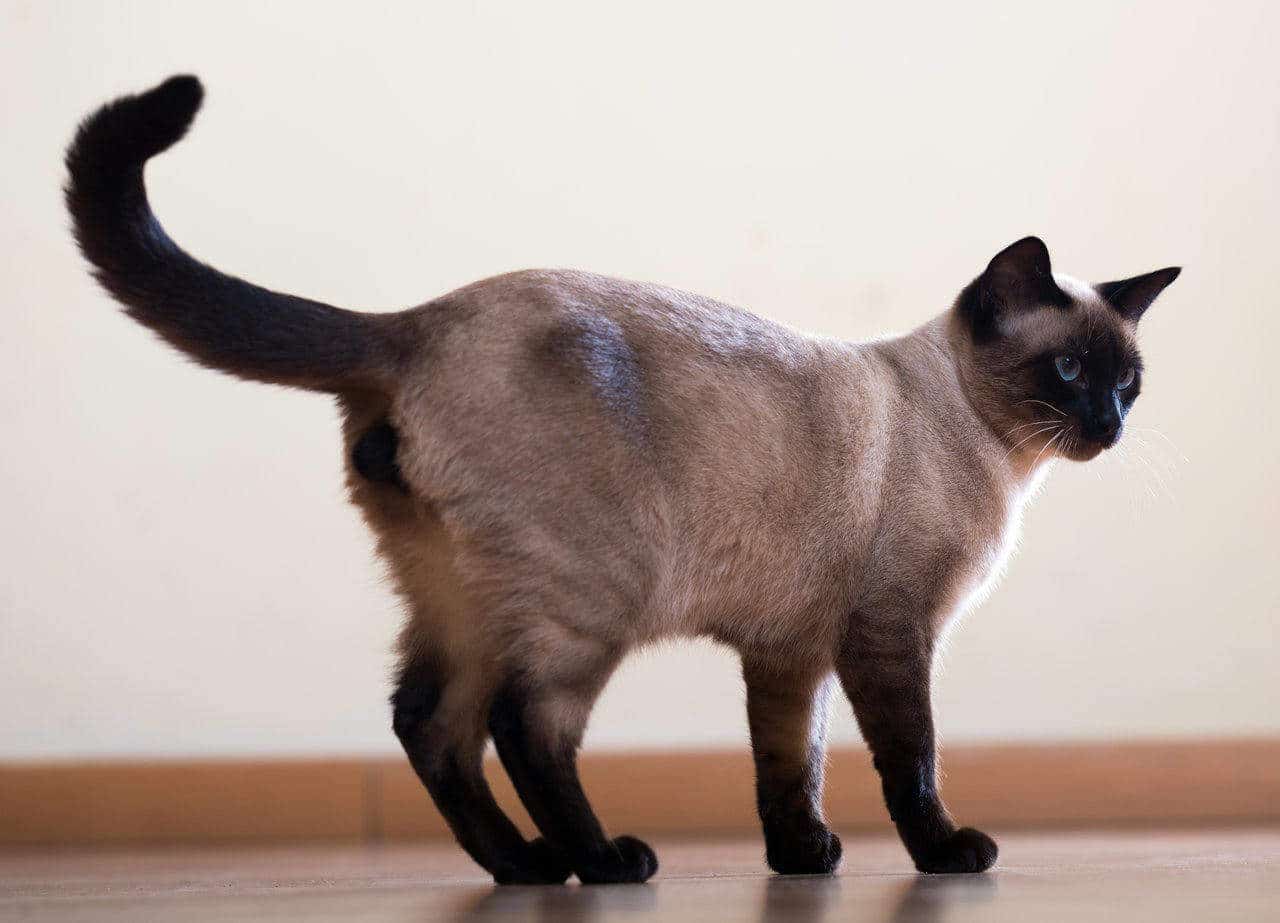
The body language of cats is broad. Our cat is communicates with the whole bodyDeciphering each of their movements is not an easy task and is often a mystery. Previously we posted how to interpret the body language of the ears and the various meanings of meows, now we will interpret the meaning of the different movements of the tail.
The main functions of the cat's tail are to maintain balance and to be able to perform very precise movements. It is like an extended spine that facilitates any movement; like running, jumping, climbing, etc. In addition to motor functions, it is also an indicator of our pet's behavior.

According to ethologists, the cat can transmit twelve signals different with the tail:
- Tail up: Is happy.
- Low tail: He is sad or shows his submission.
- Quick movements: It means that he is angry.
- Slow and smooth movements: You are focused or focused on something that attracts your attention.
- Stiff tail: You are interested / intrigued with something.
- Inflated and bowed tail: He is scared.
- Tail between the legs: He is upset or afraid.
- Tail movements from side to side: He is angry and shows us his discontent.
- Upright and straight with the tip to the side: Express curiosity.
- Upright and rigid with the tip moving sideways: Expresses that it is unhappy or irritated.
- Ruffled tail hair: Express anger.
- Horizontal tail: It is comfortable and feels safe.
It is not easy to identify all the movements of the tail and it is not necessary to focus attention on a single part of the animal's body, as we have said before, the cat. communicates with the whole body, you have to be patient and observe all their movements and little by little we will identify their state of mind.
Understand your cat better through its tail

Next we are going to detail a little more the signals that your cat gives you with its tail and how you can understand it better just by looking at it. A cat's tail signals some of the best body language signs, you just have to understand them. The tail of a cat is tremendously communicative, thanks to how mobile it is.
Just think of all the different types of tail movements you've seen - it can move up and down, move side to side, move slowly or quickly, snuggle around you, trash, and twitch, among other things. And those are just the moves. The way the hair is pinned or supported on the tail can also be an indicator of mood - the hair can be flat or bristly like a brush. But to understand everything a little better you must take into account the following:
Tail up
As we indicated above, the cat is happy, he feels friendly with you. Generally, your cat's tail will stay upright when it's around you. Mother cats hold their tails up when they want their kittens to follow (you can also help your kittens see it, depending on where they are). Similarly, when kittens run to greet their mother (or parents), their tails will also be raised up.
Tail raised at an angle
This is a non-threatening gesture that means the cat is just not sure about something. Your cat can do this while smelling new friends who have come to visit. Generally, if they pass your cat's test, your cat will promptly lift its tail with kindness.
Tail raised, swaying
Large, dramatic movements of the tail generally convey powerful emotion. This can indicate a teasing attitude - that your cat is upset or wants to be left alone. Your cat will likely do this when he walks past you in recognition, but to show you that his mind is on other things. They want to go their own way.
Tail straight up, shaking

A shaky tail is a very good sign, means that your cat is very excited to see you. It's a very friendly greeting that you will likely receive when you walk through the door at the end of the day or if he greets you when you get out of bed in the morning. Similarly, a cat that is very excited to see you may also pull its tail forward onto its back. While this may seem strange, the behavior really makes sense to our cats - it's their way of inviting us to smell their anal glands, their way of being friendly.
Tail raised, hooked at the tip
When a cat hooks the tip of its tail, it looks like a question mark, which is exactly how your cat feels. He's friendly (hence the queue up), but he's not sure about something.
Tail held horizontally behind the cat
This neutral position that can convey some feelings. Your cat can be alert, confident, relaxed, or friendly. It can definitely depend on the situation and the rest of your cat's body language.
Hook at the base of the tail
Also called the "inverted U tail" or "horseshoe", this behavior indicates defensive aggression. Your cat's tail will usually be on end, too. You'll often see this in your cat when it's time for the "crazy kitties" at the end of the day. He may also arch his back and walk a bit like a crab, especially if he has been upset by another cat or is feeling uneasy about something.
Hitting the tail
This could mean a number of things: Look at your cat's other body language to find out exactly how it feels. A tail that sways from side to side irregularly could convey one of several things, including:
- Intense interest if your cat is focused on something, like a bird outside, or is about to jump on a toy (prey).
- Ecstasy if your cat is really enjoying a grooming session.
- Wrath if the tail slams loudly on the ground.
- Una invitation to another cat to play.
- Great enthusiasm or aggression if the tail is wagging violently.
Puffy tail
When your cat's tail swells like a brush, you can be pretty sure your cat is feeling threatened and has become defensively aggressive. Your cat may bristle. queue if you scare him, if he's scared, or if another cat (or person) angers him. You will probably try to escape the situation if possible, but you can also stay to defend yourself if necessary. Like when a cat bristles the hair on its back, this action is meant to make itself look bigger, in an attempt to get the aggressor to leave it alone.
The tail is kept low and straight
When your cat keeps its tail diagonally down, you are likely to feel aggressive, or that he might soon be disturbed. Again, read your cat's other body language and watch the tail to see what it develops into.
Tail tucked between the legs
This is a submissive move that is probably trying to convey that your cat is upset or wants to be left alone. Unlike the puffy tail, a submissive tail can make a cat look smaller and less threatening for another aggressive cat.
Shaky tail tip
Sometimes only the tip of your cat's tail will contract. This generally indicates that is alert and concentrates on looking at something that interests him, such as an insect or a bird outside. Your cat can also wag its tail if it is playing and is approaching "prey."
Tails linked with the tails of other cats
Cats will entwine their tails around the tails of other cats, other objects, and of course you! It's their friendly way of marking us as their own, and potentially trying to influence us to give them what they want, like attention or food!

With this little guide you will be able to understand your cat much more and what it means to you when it wags its tail in certain ways. Your cat tells you a lot through its tail, because it does not need to speak to be able to convey to you how it feels or what is happening to it at a certain moment. Your cat's body language shows you what it is like or what it needs, and now, you will better understand what it is saying to you through its tail.
I appreciate it and if it helps you a little to understand your cat a little more, it's great 🙂